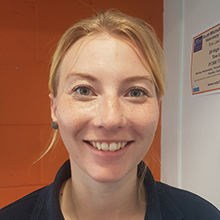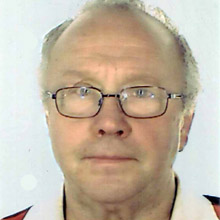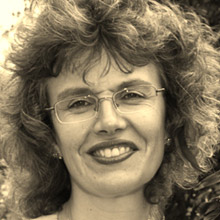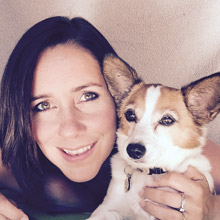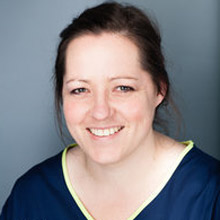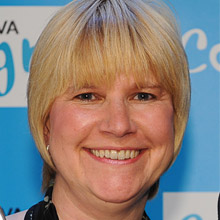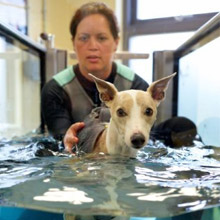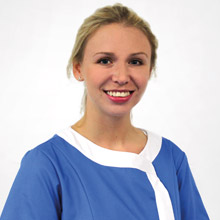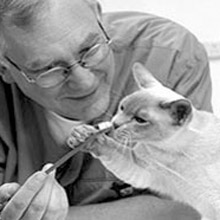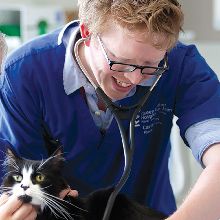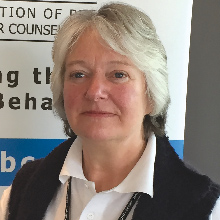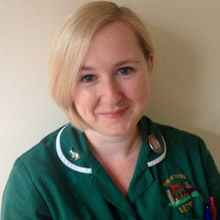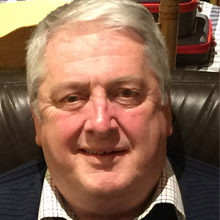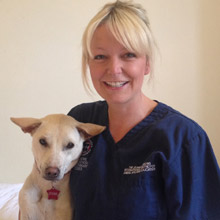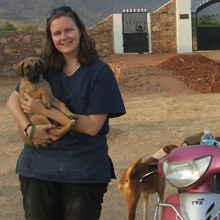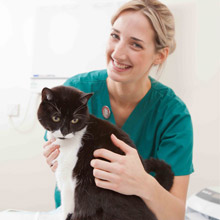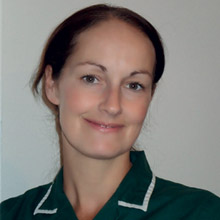Clinical Abstracts and blogs
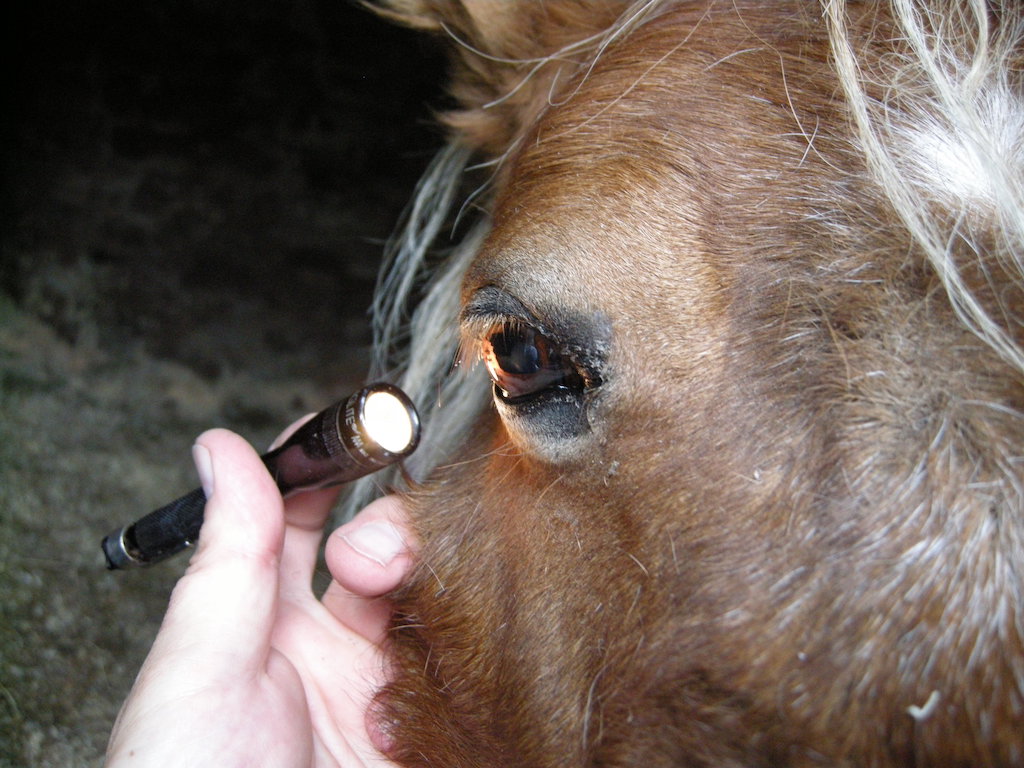
Eye problems in the horse
The size and prominence of the equine eye means that disease and injury to the eye are common occurrences. Many...

Locating neurological lesions
Whilst neurology is an area of specialisation, most neurological lesions initially present in first opinion practice. Therefore, every general...
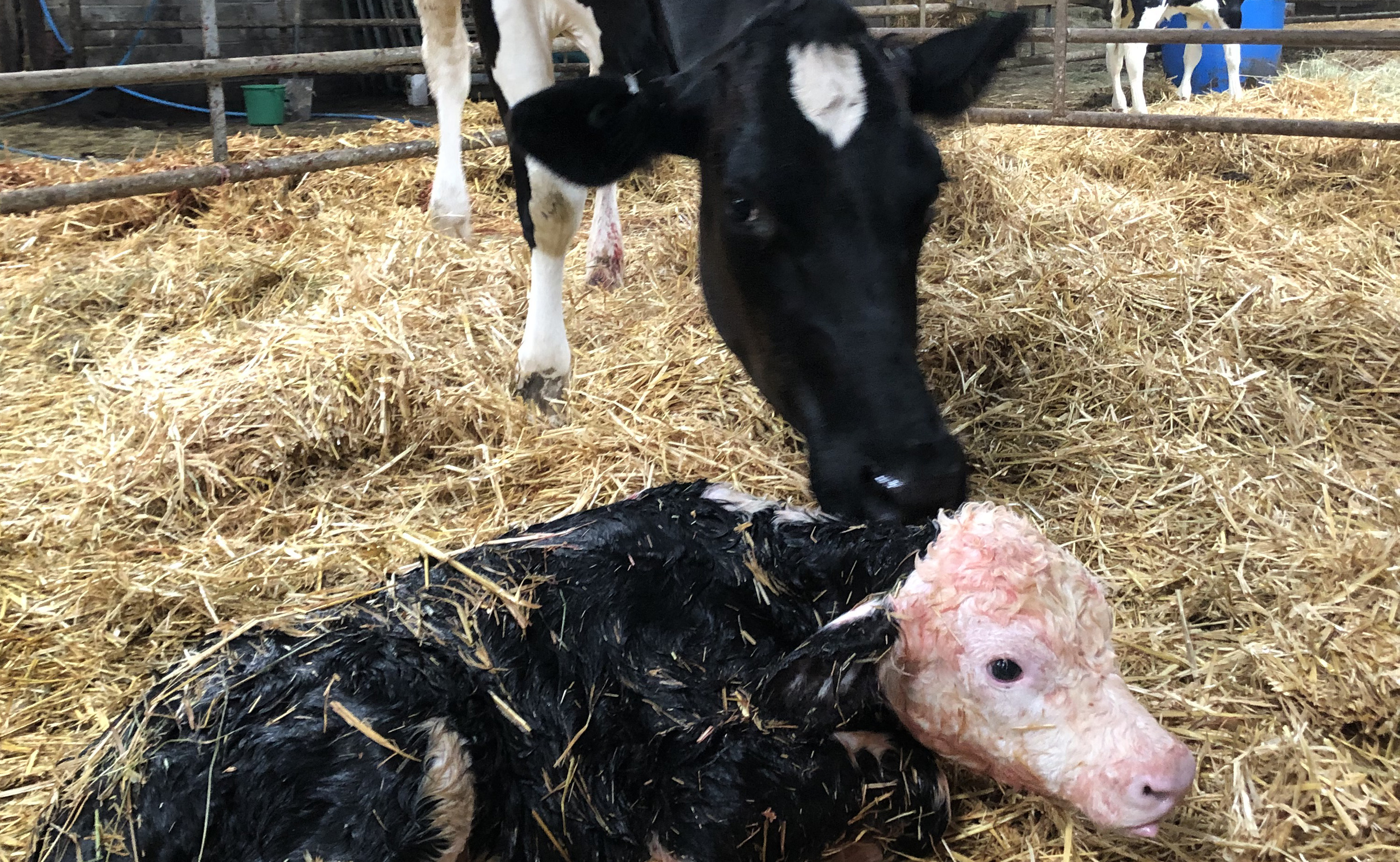
Common calving problems
The objectives for managing a cow at calving should be the same regardless of whether the cow is in a...
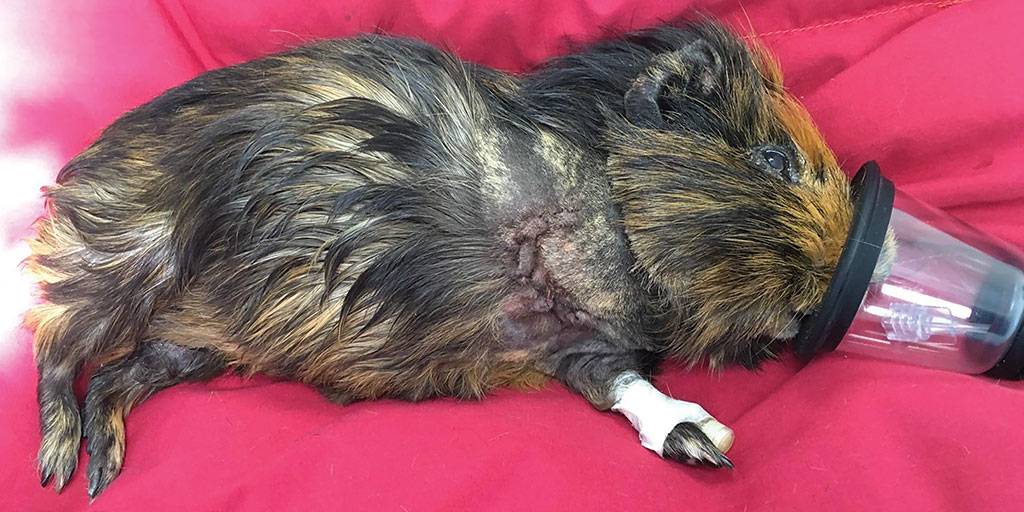
A forelimb amputation in a guinea pig with osteomyelitis
Guinea pigs are commonly-owned, exotic small mammals and present frequently to veterinary surgeons in general practice. Small mammal limb injuries...

Poisoning – the bigger picture: pigs, sheep, goats and horses
The Veterinary Poisons Information Service answer enquiries about any animal – big or small – and although larger animals represent...
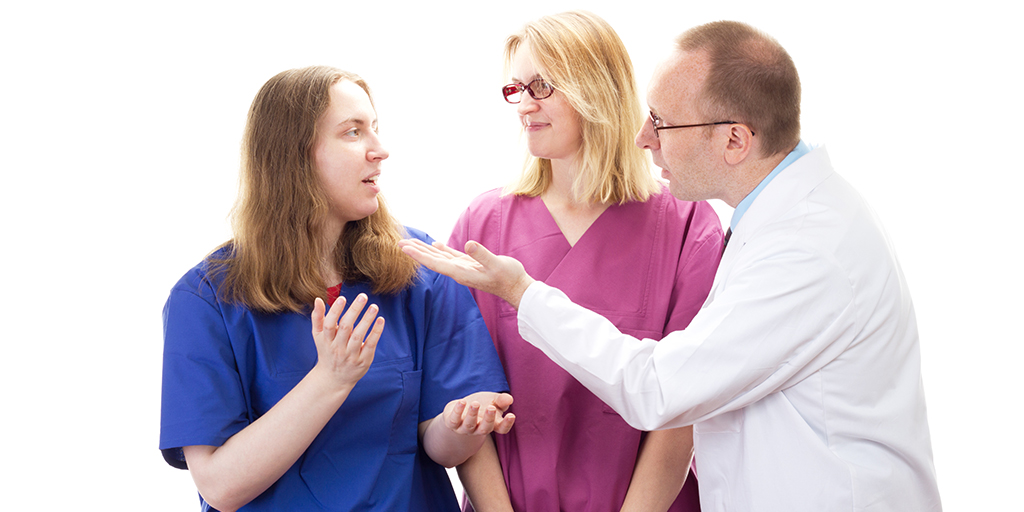
Team member disputes – managing difficult employment relationships before they affect the wider practice
Stephenie Malone, specialist employment solicitor at Harrison Clark Rickerbys solicitors, discusses team member disputes in the veterinary practice. Difference and...
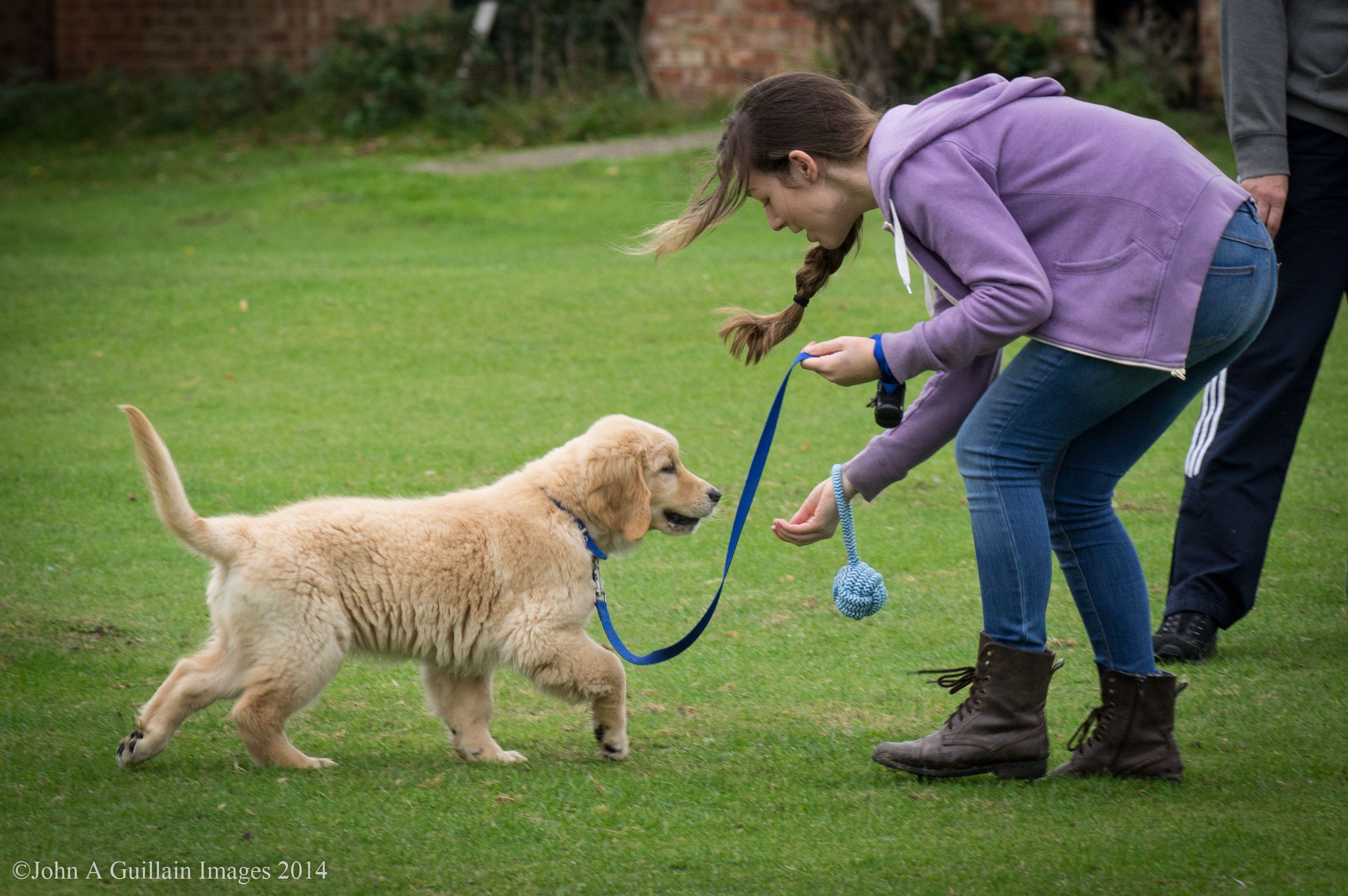
Whom to choose? Clearing confusion about appropriate behaviour and training referral services
In this article, Karen Wild, ASAB-Certificated Clinical Animal Behaviourist, explores the options for veterinary surgeons, veterinary nurses and owners regarding the...

Comedy Wildlife Photography Award 2024 finalists revealed
There are 40 individual entries to choose from, as well as four portfolio entries and three video entries. Members of the public can vote for their choice until 31 October and will be entered into a £500 prize draw.
This year’s competition saw nearly 9,000 entries from 98 countries – all competing to win a one-week safari in the Masai Mara.
The Overall Winner, Category Winners and Highly Commended Winners will be announced on Tuesday, 10 December at an Awards Night in London. This will be followed by a week-long exhibition of the entries at the Gallery@Oxo from 10-16 December.
Tom Sullam, who co-founded the competition, said: "It’s a privilege to be part of this exciting journey, making us all laugh and raising awareness of animal conservation. We can’t wait to announce the winners!”
Images © Nikon Comedy Wildlife Awards

CMA opens consultation on survey letter
The CMA has invited comments on a draft survey invitation letter, as it continues its investigation into consumer experience.
Stakeholders have until midday on 22 October to share their thoughts on its contents.
The quantitative survey, conducted by Accent, recently underwent a separate consultation. It will be sent to a random sample of participants, with the letter inviting them to complete the survey.
The letter can be found here. Stakeholders should email vetsMI@cma.gov.uk to make comment.
Image © Shutterstock

Restricted zone extended after more bluetongue cases
After three new cases of bluetongue virus serotype 3 were detected along the Hertfordshire and Buckinghamshire border, the restricted zone has been extended.
The zone now includes Buckinghamshire and part of Berkshire, as well as Bedfordshire, Cambridgeshire, City of Kingston upon Hull, East Riding of Yorkshire, East Sussex, Essex, Greater London, part of Hampshire, Hertfordshire, Kent, part of Leicestershire, Lincolnshire, Norfolk, part of Northamptonshire, Nottinghamshire, Suffolk, Surrey, and West Sussex.
Susceptible animals in the restricted zone should only be moved if it is essential. A specific licence is needed to move a susceptible animal from within the restricted zone to outside of the zone.
Bluetongue is a notifiable disease. Suspected cases must be reported on 03000 200 301 in England or 03003 038 268 in Wales. In Scotland, suspected cases should be reported to the local field services office. In Northern Ireland, suspected cases should be reported to the DAERA Helpline on 0300 200 7840 or by contacting the local DAERA Direct Veterinary Office.
A map of the areas where restrictions apply can be found here.
Image © Shutterstock

Deaf dog learns sign language after rescue
A five-year-old dog rescued by the RSPCA has a new lease of life after learning sign language commands.
Polo, who is a crossbreed, is now able to understand ‘sit’, ‘lie’ and ‘come back’ from hand gestures alone.
She was rescued by RSPCA officers in April 2023 after she was discovered chained up on an industrial estate with cropped ears and suffering from a prolapse.
Polo was rushed to a veterinary centre, where an examination also revealed that she was pregnant. While in RSPCA care, Polo gave birth to one puppy – Daisy.
After receiving veterinary treatment, Polo and her puppy were cared for at a private boarding centre, before being moved to RSPCA’s Southport, Ormskirk & District Branch. After moving into RSPCA care, Daisy was soon rehomed.
However, Polo is yet to find her permanent home – which the team fear might be due to people’s concerns about her deafness.
Polo was also found to be missing the tips of her ears, which had been cropped. Ear cropping, an illegal act where dogs’ ears are altered or removed, can be detrimental to canine health and welfare.
Lily Dickinson, an RSPCA fostering and adoption co-ordinator, said: “Polo is a big girl and she’s had her ears cropped, but we don’t want people to be put off by the mutilation she’s sadly had to suffer.
“We hope that the right owners won’t be deterred by this, or by her deafness, and we really want people to see her for the lovely girl she is.”
To support Polo’s rehoming, the team at the RSPCA centre have been teaching her sign language so that she can understand commands from hand gestures. She has already developed a good recall, as well as the sign language for sit, lie down, drop and find it.
Polo has been a keen learner during her training sessions and also enjoys spending time with other dogs. She is well-behaved on car rides and likes adventures.
Ms Dickinson added: “Polo is a kind soul; we even use her as our introduction dog for our new arrivals as she’s so laid-back and friendly. She’s also really playful and has lots of love to give.
“She’s a big girl and can be strong, so needs new owners who understand that, as well as adopters who are willing to continue using her sign language and teaching her to respond to hand signals.”
Learn more about adopting Polo here.
Image © RSPCA

Amazon urged to stop selling donkey-skin products
A petition urging Amazon to ban the sale of donkey-skin products on its platform has been delivered to the company’s headquarters at Crystal City, Virginia.
The petition, which had more than 370,000 signatures, was delivered by hand following a rally held in the nearby Metropolitan Park.
The rally involved organisations including Brooke USA, the Animal Welfare Institute, the Humane Society Veterinary Medical Alliance, the Humane Society of the United States, the American Association of Equine Practitioners, the American Fund for Alternatives to Animal Research, and Ekō.
Donkey-skin gelatin is used in ejiao, a traditional Chinese medicine. An estimated five million donkeys are slaughtered each year globally to meet demand for the product, including in China, Africa, and South America.
Not only does the trade in donkey skin cause animal welfare issues, it also has a negative impact on poor communities that rely on working animals. Both Brooke USA and its UK sister-organisation Brooke are calling for a global ban on the trade in ejiao.
The sale of donkey-skin gelatin products has already been banned on eBay, but they are still available on Amazon.
A bill to ban the sale of product in the USA, that was originally introduced in 2021, has been reintroduced in the House of Representatives. Brooke USA is lobbying for the legislation to be passed. Earlier this year, the African Union voted to ban the the slaughter of donkeys for their skin across Africa.
Jim Hamilton, chairman of Brooke USA, said: “The international trade in donkey-hide gelatin products is leading to the mass slaughter of donkeys, resulting in widespread harm to impoverished communities around the world.
“We should act immediately and help shut down this illicit trade that leads to substantial harm to humans and animals worldwide. The first step is to reduce the demand by shutting down product access.
“Amazon must set the example and remove all products containing ejiao from its online platform.”
Image © Shutterstock

Practice achieves top-level environmental accreditation
An independent practice in Preston, Lancashire, has been awarded Green Level accreditation by Investors in the Environment (iiE).
Oakhill Veterinary Centre was awarded the accreditation after achieving a score of 77 per cent during a sustainability audit in September.
The iiE scheme provides accreditation to organisations in the UK that have taken steps to improve their environmental impact, focusing on four key areas: leadership and governance, climate change, nature and natural resources, and pollution and waste.
There are three levels of accreditation which organisations can achieve: Bronze Level, Silver Level, and Green Level.
The practice had previously achieved Bronze Level accreditation in 2023 and was aiming for Silver Level this year, but scored highly enough to bypass that category.
Veterinary surgeon Lisa Steinhage, Oakhill Vets’ sustainability lead, worked alongside sustainability champions and the wider team at the three-branch practice to make progress on becoming more sustainable.
Actions taken by the practice included increasing the scope of environmental initiatives, setting carbon reduction targets, managing the impact that work-related travel has on the environment, making procurement practices more sustainable, and regularly reporting progress to stakeholders.
The practice plans to continue to improve its environmental credentials by working on areas such as water management and travel. Long-term, it is aiming to achieve net zero by 2040.
Dr Steinhage said: “It was important to the whole team at Oakhill Veterinary Centre that we took action to improve our own environmental impact at a time when action on climate change is so vital.
“We worked hard as a team, to put the changes in place to make Oakhill more sustainable, and to increase our social impact and presence via a series of projects that a wide range of staff were involved in.
“These projects targeted educational visits to local schools, improving our outside environment at our branches, and coming together to raise money for StreetVet – our chosen charity of the year. It has been a lot of work but it was all worth it to be awarded Green, rather than the Silver we were aiming for!”
Image © Oakhill Veterinary Centre

Rabbit and guinea pig veterinary awards open for nominations
Nominations have opened for this year’s Burgess Excel Vet Awards, which celebrate the work of veterinary professionals to improve the health and welfare of pet rabbits and guinea pigs.
The awards, which are in their fifth year, are free to enter. There are seven categories:
- Rabbit Vet of the Year: open to registered veterinary surgeons practising in the UK
- Rabbit Vet Nurse of the Year: open to registered veterinary nurses practising in the UK
- Rabbit Support Staff of the Year: open to staff currently working in a registered practice in the UK
- Rabbit Practice of the Year – in association with Rabbit Welfare Association and Fund (RWAF): open to practices in the UK which are members of the RWAF and hold RWAF Gold or Silver accreditation
- Small Animal Student of the Year: open to students studying in the UK for a veterinary or animal-nutrition-related degree
- Guinea Pig Practice of the Year: open to practices registered in the UK
- Rabbit Awareness Week (RAW) Campaign of the Year: open to any UK-based practice or individual.
The winner of each category will receive a trophy and a cash prize of £250. The winners will be announced on 17 December.
The judging panel for the awards is made up of Suzanne Moyes, deputy managing director and veterinary director at Burgess Pet Care, and spokesperson for the Rabbit Awareness Action Group (RAAG) and RAW; Rae Walters, director of the RWAF; John Chitty , co-director of a small animals/ exotics practice; Sophie Jenkins, founder of a practice for rabbits, cats, small mammals and exotic pets in Cardiff; and Dani Sewell, communications director at Fred Marketing.
Dr Moyes said: “Both rabbits and guinea pigs have complex and very specific welfare needs, which is why it’s so important that owners have access to fantastic veterinary professionals who can help them care properly for these wonderful creatures.
“We would love to hear from owners about their veterinary heroes and why they should receive an award this year – this could be a vet, nurse, vet student or a whole practice! We also welcome nominations from veterinary professionals who want to highlight the fantastic work of one of their peers.”
Nominations are open until 22 November and can be made here. Veterinary practices and professionals can nominate themselves.
Image © Shutterstock

PDSA warns against Halloween pet costumes
Animal welfare charity PDSA has warned the public against dressing their pets up for Halloween this year.
It is raising awareness of the impact that inappropriate pet clothing can have on a pet’s health and wellbeing.
Many pet costumes are made from a thick fabric, which can restrict a pet’s mobility and their ability to look after themselves. Some costumes may prevent a pet from walking, grooming or going to the bathroom comfortably.
The fabric can impair an animal’s ability to regulate their body temperature, sometimes through multiple layers of material. Smaller parts of a costume might pose a choking hazard, while other parts of a costume can cause injury if they get tangled or caught on surroundings.
PDSA says that dressing up is unnatural for pets and can cause them to become distressed. It is asking that people pay attention to their pet’s body language and behaviour, which will indicate if they are uncomfortable.
Cats may display their discomfort by trying to hide, moving close to the ground, making vocalisations and showing signs of aggression.
Meanwhile, dogs will show their stress through lip licking, yawning and panting. Their body language will be tense, with their ears pinned back and their tail between their legs. They will move away from people or try to look away.
If their owner ignores the signs they are uncomfortable, a dog may resort to aggression.
However, costumes can also mask a dog’s body language, affecting how they communicate with other animals as well as their owners. This can cause them to become confused and stressed, especially if there are misunderstandings around other pets.
Furthermore, PDSA believes that dressing pets up can be humiliating or uncomfortable. They recommend that pets are only given clothing when it will be beneficial to their wellbeing.
This might include a winter coat during cold weather, especially for animals with thin fur or medical conditions, and special boots when a dog’s paws need protecting. A high-vis jacket can be a useful safety device for winter walks.
Surgical vests are also acceptable for protecting healing wounds post-operation, while appropriate therapy tops can help reduce anxiety and stress.
Gemma Renwick, a PDSA veterinary nurse, said: “While fancy dress may be fun for us, it's important to remember that our pets aren’t toys or a Halloween party prop. Dressing them in a way that makes fun of them or puts them in an uncomfortable position is just not a considerate thing to do.
“Our pets are adorable just as they are, and there are other ways to get them involved this Halloween, such as a snuggling up on the sofa for a spooky movie night together.”
Image © Shutterstock

MP proposes law to restrict fireworks
Restrictions could be placed on the sale of fireworks to reduce the stress they can cause animals and people after a Private Members’ Bill was introduced to Parliament on Wednesday, 16 October.
Put forward by Luton North MP Sarah Owen, the Fireworks Bill is expected to include measures to reduce the impact of fireworks on animals through noise limits, firework control zones, and restricting when they can be sold. The exact details will be announced once the bill has been fully drafted.
The Private Members’ Bill is one of three related to animal welfare that will be going before Parliament. MPs will also consider a bill to ban fur imports and a bill to tackle puppy, kitten, and ferret smuggling.
Put forward by backbench MPs rather than the government, Private Members’ Bills can become law if they gather enough support in both Houses of Parliament. Earlier this year, a law to make dog and cat theft specific crimes came into force after it had originally been introduced as a Private Members’ Bill.
Ms Owen said: “I have received hundreds of letters and emails from concerned residents, frankly fed up of having their sleep and lives endlessly disrupted. Loud fireworks are also a huge cause of stress for pets, and can be distressing people with PTSD, bringing back painful or traumatic memories. It’s time to tighten the rules.
“I look forward to working with animal welfare and veterans charities, as well as MPs from across Parliament, in getting this crucial change through.”
Animal welfare charities such as the RSPCA have been campaigning for tighter restrictions on fireworks because of the stress they can cause pets, wildlife, and livestock.
David Bowles, head of public affairs at the RSPCA, said: “With Bonfire Night approaching, we know many people will be getting excited by fireworks – but it's important they are used responsibly, and consider animal welfare. “Our legislative framework in this area is long due an update, so it's really welcome to see this being looked at via a Private Members' Bill.”
Image © Shutterstock

New elbow replacement surgery to be trialled
The Royal College of Veterinary Surgeons (RCVS) Ethics Review Panel has given approval for a new elbow replacement surgery for dogs to be trialled at two referral clinics.
The third-generation Biomedtrix TATE elbow replacement surgery is the latest design of the TATE elbow replacement that first came into clinical use in the 2010s.
The new implant has already been in use in a small number of US practices. It includes new instrumentation designed to maximise the accuracy of bone preparation for the implants and a new implant design that is said to offer improved stability.
One of the clinics where it will be trialled is Moores Orthopaedic Clinic in Upton Grey, Hampshire. Andy Moores, clinical director and head of the joint replacement programme at the clinic, recently became certified to perform the third-generation TATE elbow replacement surgery after attending the first TATE technology course in Boston, USA.
The surgery is also available at Wear Referrals in Bradbury, County Durham, as part of the clinical evaluation trial. The practice is currently seeing cases for preliminary assessment for the surgery.
The procedure will be available for suitable patients with severe elbow osteoarthritis. The outcomes of the surgeries will be closely monitored and documented.
Dr Moores said: “Canine elbow replacement can be a game-changer for dogs living with chronic elbow pain but up until this point the elbow replacement systems have not been as reliable as we would like.
“The third-generation TATE implant has been in use with a small number of US surgeons for several years now and the results so far have been very promising.
“We are delighted that Biomedtrix have invited us to join the evaluation trial for this implant and that the RCVS Ethics Review Panel have approved this. We look forward to offering this surgery as an option for some of our most painful canine patients.”
Image © Moores Orthopaedic Clinic

Bee conservationist to deliver BVA lecture
Dave Goulson, a leading bee ecologist and founder of the Bumblebee Conservation Trust, is to deliver this year’s Wooldridge Memorial Lecture.
The lecture will form part of the British Veterinary Association (BVA) Congress, which will take place at London Vet Show on Friday, 15 November 2024.
Prof Goulson is a professor in biology at the University of Sussex. He has written over 350 scientific articles, which explore the ecology and conservation of bumblebees and other insects.
He is also the author of several bestselling books, including A Buzz in the Meadow, The Garden Jungle and Silent Earth.
Prof Goulson has received many awards and honours. He was elected as a Fellow of the Royal Society of Edinburgh in 2013 and, in 2020, accepted the Zoological Society of London’s Clarivate Award for Communicating Zoology.
On Friday, 15 November, between 11am and 12.15pm, Prof Goulson will deliver a lecture titled ‘Companion animal parasiticides and biodiversity: the crucial role of vets’.
The lecture is set to display the evidence of a rapid decline in insect abundance and consider its consequences. This will be examined through a veterinary perspective, assessing the role which veterinary medicines may have in the decline.
There will be particular focus on the parasiticides which are used on small animals, with Prof Goulson drawing on his own research into the effects of spot-on treatments on river pollution.
Prof Goulson’s lecture will be followed by a Q&A session for the audience.
Prof Goulson said: “I’m delighted and honoured to be asked to deliver BVA’s Wooldridge Memorial Lecture.
“I’ve spent my life studying insects and attempting to combat their declines. Recently, veterinary ectoparasiticides used on dogs and cats have been implicated as contributing to biodiversity loss, particularly through contributing to pollution of our rivers.
“I will discuss the evidence, ask the veterinary profession to consider solutions, and more broadly issue a plea for taking a more holistic view of veterinary practices which consider the wider impacts of decisions on the environment and human health.”
Anna Judson, BVA’s senior vice president, said: “We know that vets are concerned about the impact of parasiticides on the environment, which is why BVA has been leading discussions around using these products carefully and advises a risk-based approach to help minimise environmental impact.
“Prof Goulson’s lecture will offer the latest insights from his research and probe possible solutions to help vets better protect not only animals, but also their owners as well as the environment.”
Image © BVA

Seal recovers after life-threatening fishing line injuries
A grey seal that sustained life-threatening injuries from fishing gear has been released back into the wild after being looked after by the Scottish SPCA.
The seal, who has been given the name Ariel, was found on a beach in Johnshaven, Aberdeenshire, tangled in fishing line. She had a deep wound to her neck that had become severely infected and was bleeding heavily.
Ariel was taken to the Scottish SPCA’s National Wildlife Rescue Centre at Fishcross, Clackmannanshire. Her age was estimated to be at least one year old and staff at the centre believe that the fishing line may have been wrapped about her for up to three weeks.
Caitlin Ganley, a wildlife assistant at the Scottish SPCA, said: “Ariel was the worst entanglement case we’ve ever had to deal with. It was heart-breaking to see the extent of her injuries all of which could have been avoided.
“Seals are particularly vulnerable to becoming entangled in fishing lines, nets and other debris. Once trapped they often suffer slow painful deaths as the gear tightens around their necks and bodies
“Although the vast majority of anglers are responsible and take care to clear away their equipment after they've used it, there is a minority of people who fish and don't respect the environment and the wildlife that inhabits it.”
While at the centre, Ariel was looked after by the seal rehabilitation team who gave her antibiotics and regularly cleaned and dressed her wounds. She also had to be assisted in eating as she wouldn’t eat on her own.
After three months, she had reached a healthy weight of 56kg and was able to be released back into the wild.
Ms Ganley added: “ It was so emotional watching Ariel swim off as a team we were thrilled to watch her return to the sea, fully healed and ready to resume her life in the wild were she belongs.
“This is why we do the work we do and always go the extra mile.
“We put so much of ourselves into her recovery and watching her swim away, knowing she has a second chance makes all the hard work worthwhile.”
Image © Scottish SPCA

RSPCA's longest-stay dog seeks permanent home
The RSPCA has renewed its appeal for a home for Mia, a five-year-old Dutch shepherd, as she reaches 700 days in its care.
It forms part of the charity’s Adoptober October campaign as it raises awareness for over 118 dogs, cats and other animals which have been waiting over 100 days for a home.
The RSPCA rescued Mia from poor living conditions as a puppy, arranging foster care for her before she became available for adoption in November 2022. She is currently being looked after at the RSPCA’s Southridge Animal Centre in Hertfordshire, where she recently celebrated her fifth birthday.
Despite the team saying she has an affectionate nature, she is yet to find a permanent home – making her the RSPCA’s ‘most unwanted dog’.
Karen Colman, who leads RSPCA’s rehoming team, said: “All of us at the centre find Mia's situation really sad, heartbreaking and frustrating.
“We cannot understand why such a lovely, clever, deserving rescue dog has still not been adopted - we really hope things turn around for her during this Adoptober rehoming month.”
New data released by the RSPCA reveals that the average wait time for animals in its care has increased by over 31 per cent in the past five years. This is an increase from 31.7 days in 2019 to 41.4 days in 2023.
In many rehoming centres and branches animals are waiting for 100 days or more to be adopted.
This has left the RSPCA’s rehoming centres full to capacity, meaning the charity has to pay for emergency boarding centres while they wait for space. While animals are waiting to find a home, the centres have fewer spaces available for rescued animals to come in.
The charity says one reason for its rehoming crisis is that it prioritises animals which have experienced cruelty and neglect.
These animals need the most veterinary and behavioural support for rehabilitation, making them more difficult to rehome. They require experienced owners who have the knowledge and patience to continue this rehabilitation at home.
Ms Colman said: “Our rehoming centres are crying out for people who have the desire, dedication, time, facilities and willingness to step forward and offer to adopt our long stay animals.
“They can do this with the confidence that the RSPCA rehoming team will give them all the help, advice and support they need to make the animals transition from centre to home a positive one.”
For more information about adopting Mia, visit her page. More animals awaiting adoption can be found here.
Image © RSPCA

Charity launches 'Remembrance Paw' for police dogs
The Thin Blue Paw Foundation has launched a ‘Remembrance Paw’ to honour the service of police dogs past and present.
Available as pin badges and dog tags, the proceeds will go towards the charity’s work helping serving and retired police dogs in the UK, including with the cost of veterinary care.
Retired police dogs are not currently provided with any financial support from the police after they have retired, although many have health issues.
As well as launching the ‘Remembrance Paw’, the Thin Blue Paw Foundation also attends the Animals in War memorial for a Remembrance Day service each year. During the service, the charity’s trustees lay a wreath as a mark of respect for all current and former service animals.
Kieran Stanbridge, trustee of the Thin Blue Paw Foundation, said: “Millions of animals ran, galloped and flew into World Wars One and Two, and many more have fought in conflict or served their country or community since and we felt it was time there was a special symbol to pay tribute to them.
“The poppy has become a recognisable symbol around the world and we wanted to launch something that would pay tribute to the animals who have also made the ultimate sacrifice.
“We’ll be selling the ‘Remembrance Paw’ so people can pay their respects while also supporting our Foundation to help police dogs today who need our help.”
Image © Thin Blue Paw Foundation

Vets issue sycamore tree reminder
Horse owners urged to take practical steps to avoid atypical myopathy.
Horse owners are being urged to keep their horses safe from the risk of sycamore trees.
The reminder from the British Equine Veterinary Association (BEVA) comes at the start of sycamore seed season, which poses a risk to horses due to atypical myopathy, or sycamore seed poisoning.
BEVA veterinary projects officer Lucy Grieve stated: “With leaves still on trees now is the time to identify sycamores in the vicinity of your horse’s fields and predict the future risk. Once the leaves start to turn and then drop it will be much more difficult to spot sycamores.”
Sycamore seeds are produced in abundance during the autumn, and spread considerable distances during high winds.
The BEVA says that while grazing horses should ideally by kept away from sycamore trees, horse owners with no other option should provide supplementary forage in the field 'to help keep them occupied' and 'prevent them from ingesting seeds.'
They add: 'It is imperative to seek veterinary attention immediately if horses that have access to sycamore seeds show any signs of illness.'
Sycamore seeds produce a poisonous toxin called Hypoglycin A, which can remain present in high concentrations in seedlings. When a horse eats these seeds, either by accident or because they lack alternative forage, they can develop atypical myopathy – a severe and often fatal condition that leads to muscle damage.
Another hazard of the autumn season for horses is acorn poisoning. However, these are more manageable because they fall under the trees and are too heavy to spread very far.
The BEVA advises that horse owners take the following steps to reduce the risk of sycamore seed or acorn poisoning:
· identify trees both around grazed fields as well as those in close proximity.
· collect seeds or exclude horses from affected areas using electric fencing or stabling.
· feed supplementary hay to try and prevent horses from excessive foraging for short blades of grass and inadvertent ingestion of seeds. (Ensure that hay does not become contaminated by seeds).
· don’t rashly fell trees when laden with seeds as this can cause a sudden and massive contamination of the pasture.
· monitor horses carefully even after they have been moved from affected pasture as disease can occur up to four days after exposure.
Image (C) Shutterstock.

African Union calls for urgent action on donkey skin trade
The African Union's commissioner for agriculture, rural development, blue economy and sustainable environment has written to member states urging them to prioritise the recent ban on slaughtering donkeys for their skin.
Donkey skin is used to make an ingredient in traditional Chinese medicine called ejiao. At least 5.9 million donkeys are slaughtered globally each year to supply demand, according to research by The Donkey Sanctuary. The moratorium on the donkey skin trade was passed by the African Union in February.
In Africa there are an estimated 33 million donkeys and many are used as working animals. Uganda, Tanzania, Botswana, Niger, Burkina Faso, Mali, and Senegal had already banned donkey exports to China before the African Union moratorium was introduced.
In her letter, Josefa L.C. Sacko emphasised that countries need to integrate the welfare of donkeys into their national plans, as well as allocate resources and instigate polices to mitigate adverse economic and environmental aspects of the trade.
The Donkey Sanctuary and its partners in the International Coalition for Working Equids have welcomed the letter.
Otieno Mtula, regional advocacy and campaigns manager (Africa) for The Donkey Sanctuary, said: “The urgency of this request from the African Union demonstrates its commitment to protecting one of Africa’s most precious resources, and represents an important milestone in our campaign to end the skin trade.
“This is not just about a moratorium on the slaughter of donkeys, but a move toward a future where their contribution is valued and their welfare is sacrosanct.
“As demand for their skins continues to threaten Africa’s donkeys, food security and livelihoods, this is a call to arms to member states to prioritise and allocate resources so collectively they can bring an end this cruel and unsustainable trade and protect these hardworking, sentient animals.”
Image © Shutterstock

Coyotes can make "puppy dog eyes"
New study suggests the ability is not unique to domestic dogs.
A new study has suggested that coyotes can make “puppy dog eyes”, challenging the idea that the trait is unique to domestic dogs.
Scientists at Baylor University examined the muscle responsible for raising the inner eyebrow – the levator anguli oculi medialis (LOAM) – in coyotes, and found that it is almost identical to that found in dogs.
The finding contradicts the idea that the muscle developed specifically to enable communication between humans and dogs during domestication.
Patrick Cunningham, who led the research team, said: “Our findings suggest that the ability to produce ‘puppy dog eyes’ is not a unique product of dog domestication but rather an ancestral trait shared by multiple species in the Canis genus. This raises fascinating questions about the role of facial expressions in communication and survival among wild canids.”
In the study, published in the Royal Society Open Science, researchers compared the facial muscles of dogs, coyotes, and gray wolves. They found that whilst the LAOM is well-developed in coyotes and dogs, the muscle is either absent or modified in gray wolves.
The current hypothesis suggests that the LAOM developed to enable humans and dogs to communicate with each other. However, this new finding suggests the muscle was likely present in a common ancestor of coyotes, dogs, and gray wolves but was later lost or reduced in wolves.
Furthermore, the study highlights significant differences in the facial muscles of coyotes, especially those related to lip and brow movements. A DNA test ruled out significant dog ancestry in the coyote specimens, supporting the idea that these traits are not a result of crossbreeding.
Cunningham said: “Our work reveals that coyotes and dogs share not just behavioral similarities, but also a fascinating evolutionary history that includes the ability to make expressions that we once thought were unique to domesticated animals”.
Image (C) Shutterstock.

New iCatCare course addresses feline wellbeing
The behaviour course is designed for those who work with cats.
International Cat Care (iCatCare) has launched a new behaviour course, designed to support those who work with cats in promoting improved feline wellbeing.
The Cat Behavioural Health Programme will support learners who are in the position to give feline advice to identify and address behavioural problems before they develop.
PDSA’s recent Paw Report saw over 70 per cent of cat owners report that their cat experienced behavioural problems. The new Cat Behavioural Health Programme has been designed so that those who regularly work with cats, such as veterinary professionals or those in rehoming centres, can advise on behavioural issues as soon as possible.
Those who complete the course will be able to identify behavioural issues, provide preventative and behavioural first aid advice, and work under the supervision of clinical animal behaviourists to champion feline wellbeing.
They will also be on route to becoming an iCatCare Behavioural Health Practitioner.
The course has been developed by 16 internationally renowned cat welfare experts and endorsed by the European Society of Veterinary Clinical Ethology. It replaces the charity’s Advanced Feline Behaviour for Veterinary and Cat Professionals courses.
It also contributes to the knowledge and understanding requirements needed to become an ABTC Animal Behaviour Technician.
Each module includes a range of interactive course lessons and features the latest research on cat welfare such as behaviour cognition and genetics.
Learners will earn a certificate upon completion of each module. After passing four learning modules and a final project module, the learner can become a Level 1 Cat Behavioural Health Practitioner.
The course is designed to suit those with busy schedules, with a flexible pay-per-module plan and on-demand delivery.
Sarah Ellis, head of cat mental wellbeing and behaviour at iCatCare, said: “Preventative advice and early recognition of problem behaviours are both key to improving cat welfare.
“This programme allows anyone who works with cats, either directly or in a remote advisory role, to gain the knowledge and understanding required to help promote cat behavioural health.”
The charity is currently planning content for the Level 2 award, which will focus on more people-focused skills such as communication, professionalism and ethics.
The new course can be found here
Image © Shutterstock

First non-clinical workplace achieves BVA scheme accreditation
A non-clinical veterinary workplace has achieved accreditation in the British Veterinary Association's (BVA's) Great Workplaces scheme for the first time.
Food Standards Scotland: Meat Operational Delivery has been awarded Silver accreditation after it demonstrated particular strength in mentoring, career development, performance conversations, and psychological wellbeing.
Previously, only veterinary practices have achieved accreditation in the scheme which was launched by the BVA as part of its Good Veterinary Workplaces initiative to recognise positive workplace culture.
In order to be awarded accreditation, Food Standards Scotland: Meat Operational Delivery worked with a BVA accreditor to demonstrate its strengths against four key themes: health and wellbeing, leadership and management, culture, and learning and development.
The Great Workplaces scheme awards workplaces either Gold or Silver accreditation. Workplaces which have achieved accreditation are required to undergo reassessment after three years.
Elizabeth Mullineaux, BVA president, said: “It’s wonderful to see a non-clinical veterinary workplace join the growing number of practices who have secured accreditation through Great Workplaces by BVA.
“We know that veterinary workplaces are incredibly diverse and we are passionate about creating positive working environments in every area of the profession.”
Elena McWatt, head veterinarian at Food Standards Scotland, added: “We have significantly improved our working environment over the past few years, with enhancements to pay and benefits, revised management structure to provide adequate support to all field staff and accredited training and mentoring programme for new vets joining, to mention just a few.
“We signed up for the Great Workplaces by BVA accreditation for two reasons: to confirm processes that work well and should be maintained, but also to identify areas that require more management focus.”
Image © Shutterstock







